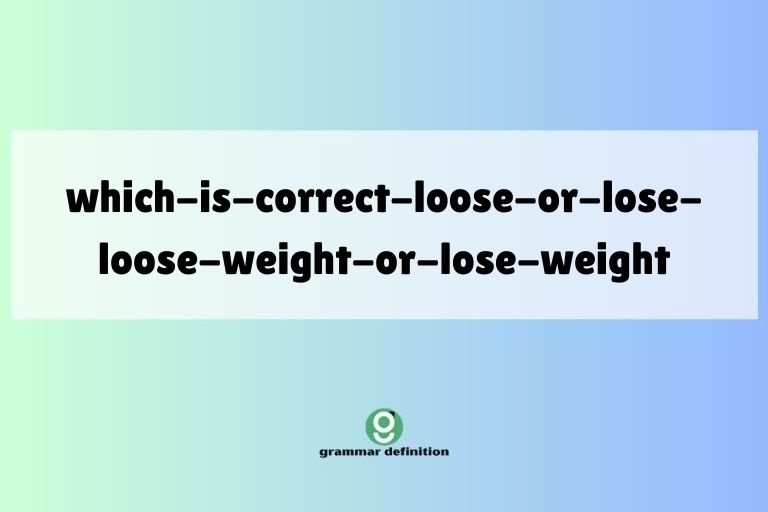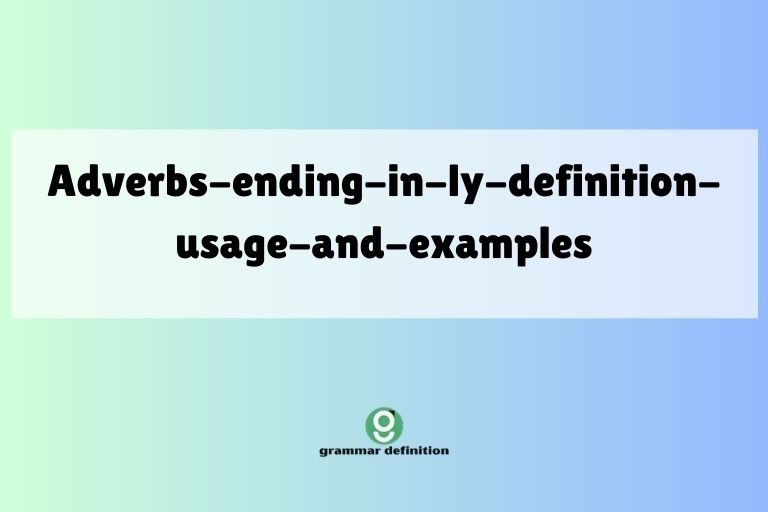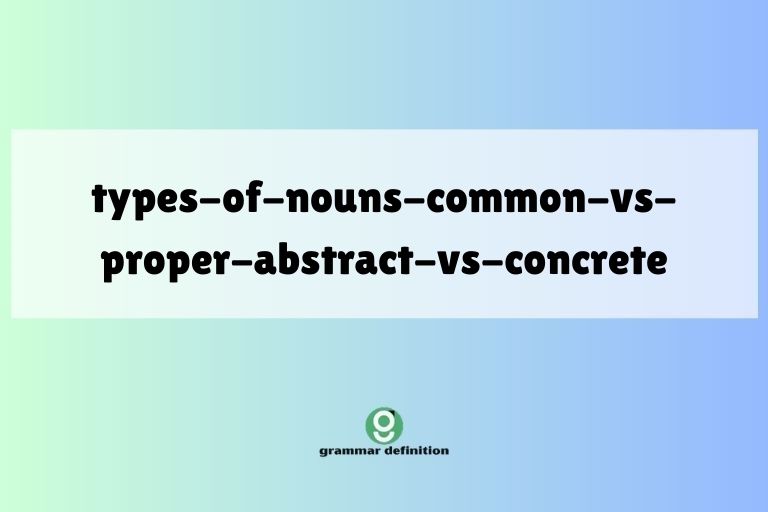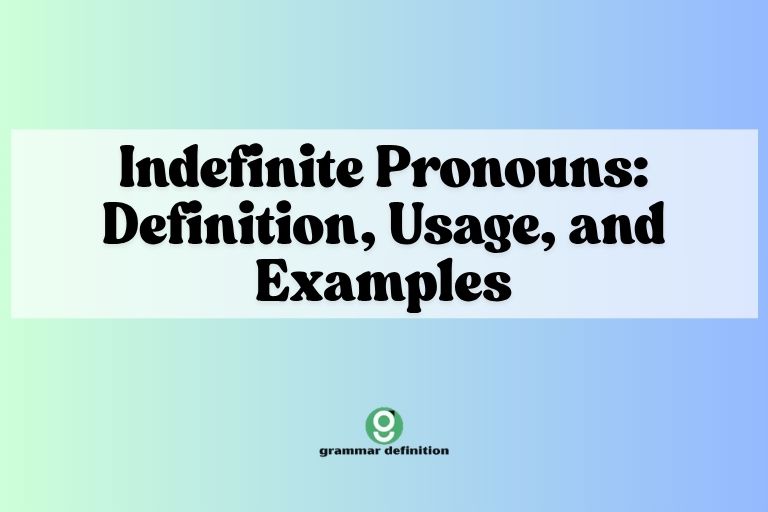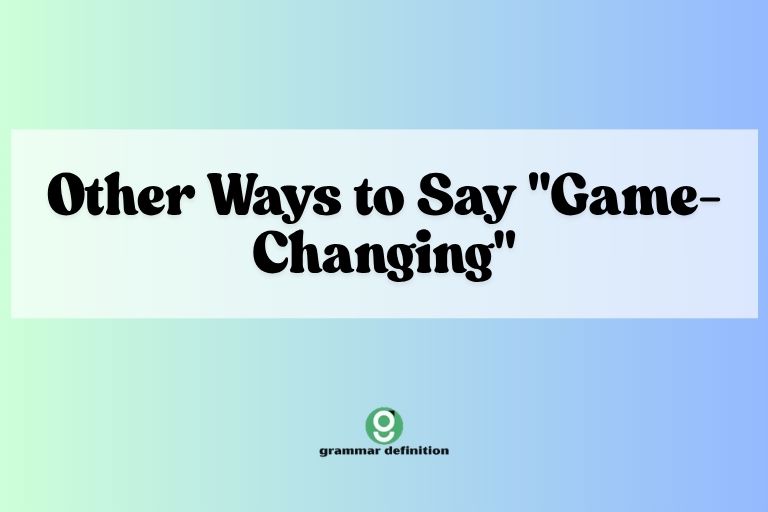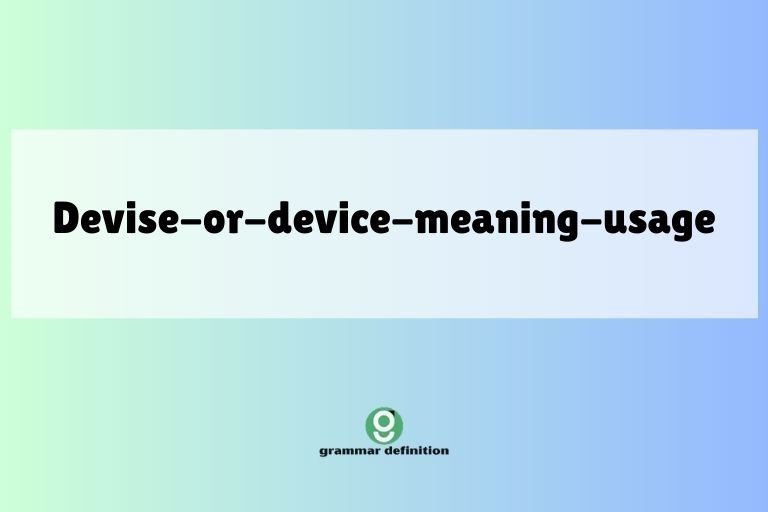E.G.: Definition, Usage, and Examples in Writing
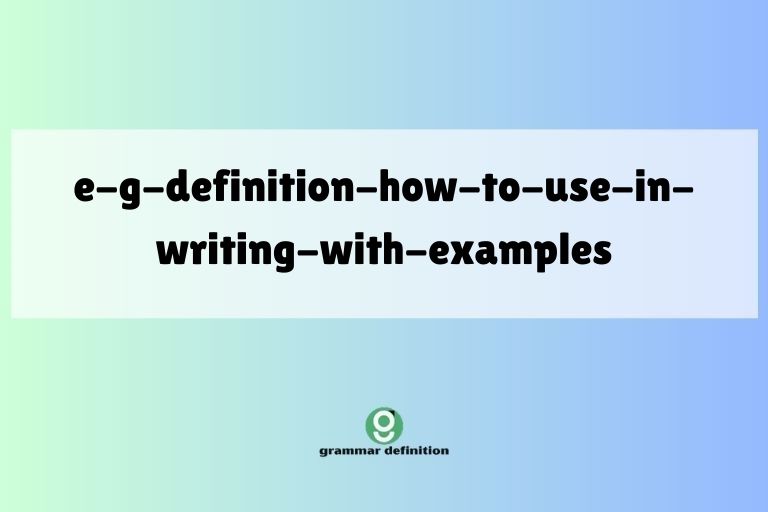
Understanding abbreviations and Latin terms is crucial for precise and effective communication, especially in academic and professional writing. One such abbreviation is “e.g.,” derived from the Latin phrase exempli gratia. Knowing how to use “e.g.” correctly can significantly enhance the clarity of your writing by providing pertinent examples to support your statements. This article serves as a comprehensive guide, covering the definition, proper usage, and common pitfalls associated with “e.g.” Whether you are a student, a professional, or simply someone interested in improving your writing skills, this guide will equip you with the knowledge necessary to use “e.g.” confidently and accurately.
This guide will walk you through the nuances of “e.g.,” ensuring you understand its function and application. We’ll explore its definition, structural aspects, and how it differentiates from similar abbreviations like “i.e.” Through clear explanations, numerous examples, and practical exercises, you will gain a solid understanding of how to integrate “e.g.” seamlessly into your writing.
By the end of this article, you’ll be able to use “e.g.” with confidence, adding precision and clarity to your communication.
Table of Contents
- Definition of E.G.
- Structural Breakdown
- Types and Categories
- Examples of E.G. in Sentences
- Usage Rules for E.G.
- Common Mistakes with E.G.
- Practice Exercises
- Advanced Topics
- Frequently Asked Questions (FAQ)
- Conclusion
Definition of E.G.
“E.g.” is an abbreviation of the Latin phrase exempli gratia, which translates to “for example” or “for the sake of example.” It is used in writing to introduce one or more examples that illustrate a point or clarify a statement. The primary function of “e.g.” is to provide specific instances that help the reader understand a more general concept or idea. It indicates that the examples provided are not exhaustive but rather representative of a larger group or category.
Unlike “i.e.” (id est, meaning “that is”), which provides a clarification or restatement of something already mentioned, “e.g.” offers examples. Understanding this distinction is crucial for using these abbreviations correctly. While “i.e.” narrows down the scope, “e.g.” broadens understanding through illustration.
In academic and formal writing, using “e.g.” adds precision and helps avoid ambiguity. It signals to the reader that you are providing specific instances to support your claims, enhancing the credibility and clarity of your argument.
Correct usage of “e.g.” demonstrates attention to detail and a commitment to clear communication.
Structural Breakdown
The abbreviation “e.g.” typically appears within a sentence and is followed by a comma. The examples that follow are separated by commas if they are short, or by semicolons if they are longer or contain internal commas.
The entire phrase, including “e.g.” and the examples, is usually enclosed in parentheses or set off by commas, depending on the context and the desired level of emphasis.
Here’s a breakdown of the structural elements:
- e.g.: The abbreviation itself, always written in lowercase with periods after each letter.
- Comma: A comma immediately follows “e.g.” to separate it from the examples.
- Examples: One or more examples are provided to illustrate the preceding statement.
- Separators: Examples are separated by commas (for short examples) or semicolons (for longer examples).
- Enclosure: The entire phrase is typically enclosed in parentheses or commas.
Understanding this structure ensures that “e.g.” is used correctly within a sentence, maintaining clarity and avoiding grammatical errors. The consistent application of this structure enhances the readability and professionalism of your writing.
Types and Categories
While the basic function of “e.g.” remains consistent, its application can vary depending on the context and the type of examples being provided. Here are some common categories:
Specific Instances
This is the most common usage, where “e.g.” introduces specific examples that fall under a broader category. For instance, “Many fruits are rich in vitamins (e.g., oranges, bananas, and apples).”
Illustrative Scenarios
“E.g.” can be used to provide hypothetical or real-life scenarios to illustrate a concept. For example, “Consider various marketing strategies (e.g., social media campaigns, email marketing, and content creation).”
Categorical Examples
In this case, “e.g.” introduces examples that represent different categories within a larger group. For instance, “Different types of literature exist (e.g., novels, poetry, and drama).”
Process Steps
“E.g.” can illustrate steps within a process or procedure. For example, “The scientific method involves several steps (e.g., observation, hypothesis formation, and experimentation).”
By recognizing these different categories, you can effectively use “e.g.” to provide relevant and clear examples, enhancing the overall clarity of your writing. The flexibility of “e.g.” makes it a valuable tool for illustrating a wide range of concepts and ideas.
Examples of E.G. in Sentences
To further illustrate the proper usage of “e.g.,” here are several examples categorized for clarity. These examples demonstrate how “e.g.” can be used in various contexts to provide specific instances and enhance understanding.
General Examples
This table provides general examples of how “e.g.” can be used in a variety of sentences.
| Sentence |
|---|
| Many countries in Europe are popular tourist destinations (e.g., Italy, France, and Spain). |
| Several types of renewable energy sources are available (e.g., solar, wind, and hydro). |
| The company offers a variety of services (e.g., consulting, training, and support). |
| Animals exhibit diverse behaviors (e.g., migration, hibernation, and mating rituals). |
| Various programming languages are used in software development (e.g., Java, Python, and C++). |
| Different types of musical instruments exist (e.g., guitars, pianos, and drums). |
| Many fruits are rich in vitamins (e.g., oranges, bananas, and apples). |
| Several sports require specialized equipment (e.g., hockey, skiing, and golf). |
| The store sells a variety of baked goods (e.g., cookies, cakes, and pastries). |
| Different types of clouds can be observed (e.g., cumulus, stratus, and cirrus). |
| Many websites offer online courses (e.g., Coursera, Udemy, and edX). |
| Various types of transportation are available in the city (e.g., buses, trains, and taxis). |
| The library has a wide selection of books (e.g., novels, biographies, and textbooks). |
| Different types of flowers bloom in the spring (e.g., tulips, daffodils, and roses). |
| Many countries celebrate national holidays (e.g., Independence Day, Labor Day, and Thanksgiving). |
| Several types of desserts are popular (e.g., ice cream, chocolate cake, and apple pie). |
| The museum features various exhibits (e.g., paintings, sculptures, and artifacts). |
| Different types of trees grow in the forest (e.g., oak, maple, and pine). |
| Many animals live in the rainforest (e.g., monkeys, parrots, and jaguars). |
| Several types of pasta are used in Italian cuisine (e.g., spaghetti, penne, and ravioli). |
| The company provides various insurance plans (e.g., health, life, and auto). |
| Different types of coffee drinks are available at the café (e.g., latte, cappuccino, and espresso). |
| Many vegetables are rich in nutrients (e.g., spinach, carrots, and broccoli). |
| Several types of birds migrate during the winter (e.g., robins, geese, and swallows). |
| The store sells a variety of electronic devices (e.g., smartphones, laptops, and tablets). |
Academic Writing Examples
This table provides examples of how “e.g.” can be used in academic writing to support arguments and provide clarity.
| Sentence |
|---|
| Various research methods are used in social sciences (e.g., surveys, interviews, and experiments). |
| Several theories explain the causes of climate change (e.g., greenhouse gas emissions, deforestation, and industrial pollution). |
| Different literary devices enhance the meaning of a poem (e.g., metaphor, simile, and alliteration). |
| Many historical events shaped the course of the 20th century (e.g., World War I, World War II, and the Cold War). |
| Various economic indicators are used to assess a country’s performance (e.g., GDP, inflation rate, and unemployment rate). |
| Different types of philosophical arguments exist (e.g., deductive, inductive, and abductive). |
| Several psychological disorders affect mental health (e.g., anxiety, depression, and schizophrenia). |
| Various chemical reactions occur in a laboratory setting (e.g., oxidation, reduction, and neutralization). |
| Different types of political systems exist around the world (e.g., democracy, monarchy, and dictatorship). |
| Many factors influence consumer behavior (e.g., price, quality, and brand reputation). |
| Several types of educational assessments are used to measure student learning (e.g., tests, quizzes, and projects). |
| Various legal principles govern the interpretation of contracts (e.g., offer, acceptance, and consideration). |
| Different types of architectural styles are evident in historical buildings (e.g., Gothic, Renaissance, and Baroque). |
| Many biological processes are essential for life (e.g., photosynthesis, respiration, and digestion). |
| Several types of statistical analyses are used in research (e.g., regression, ANOVA, and t-tests). |
| Various ethical theories guide moral decision-making (e.g., utilitarianism, deontology, and virtue ethics). |
| Different types of artistic movements have influenced the history of art (e.g., Impressionism, Surrealism, and Abstract Expressionism). |
| Many environmental issues threaten the planet’s ecosystems (e.g., deforestation, pollution, and climate change). |
| Several types of communication strategies are used in public relations (e.g., media relations, crisis communication, and social media engagement). |
| Various types of financial instruments are traded on the stock market (e.g., stocks, bonds, and derivatives). |
| Different types of programming paradigms exist (e.g., object-oriented, functional, and procedural). |
| Many factors influence international relations (e.g., trade agreements, political alliances, and cultural exchanges). |
| Several types of marketing channels are used to promote products (e.g., television, radio, and internet). |
| Various types of energy sources are used to power homes and businesses (e.g., coal, natural gas, and nuclear). |
Business Writing Examples
This table provides examples of how “e.g.” can be used in business writing, such as reports and memos, to provide specific examples.
| Sentence |
|---|
| The company invests in various marketing channels (e.g., social media, email campaigns, and print advertising). |
| We need to improve several aspects of customer service (e.g., response time, issue resolution, and follow-up). |
| Our team is working on several projects (e.g., market analysis, product development, and sales forecasting). |
| The new policy affects various departments (e.g., human resources, finance, and operations). |
| We are considering several cost-cutting measures (e.g., reducing travel expenses, negotiating better supplier contracts, and streamlining operations). |
| The training program covers various topics (e.g., leadership, communication, and teamwork). |
| We need to address several challenges in the supply chain (e.g., transportation delays, inventory management, and quality control). |
| The company is expanding into new markets (e.g., Asia, Europe, and South America). |
| We are evaluating several software solutions (e.g., CRM, ERP, and project management tools). |
| The sales team focuses on several key performance indicators (e.g., revenue growth, customer retention, and market share). |
| Several factors contributed to the increase in sales (e.g., effective marketing campaigns, strong product demand, and competitive pricing). |
| We need to improve several areas of employee engagement (e.g., recognition, communication, and career development). |
| The company is committed to several sustainability initiatives (e.g., reducing carbon emissions, conserving water, and promoting recycling). |
| We are exploring several new product features (e.g., enhanced security, improved user interface, and mobile compatibility). |
| The project requires several types of resources (e.g., financial capital, human resources, and technology). |
| We need to address several risks in the project plan (e.g., budget overruns, schedule delays, and scope creep). |
| The company is investing in several research and development projects (e.g., new materials, advanced technologies, and innovative designs). |
| We are implementing several strategies to improve customer satisfaction (e.g., personalized service, proactive communication, and quick issue resolution). |
| The new regulations affect several aspects of our operations (e.g., data privacy, environmental compliance, and labor standards). |
| We are considering several options for financing the expansion (e.g., bank loans, venture capital, and private equity). |
| The company is focusing on several key customer segments (e.g., small businesses, large enterprises, and government agencies). |
| We need to address several challenges in the current workflow (e.g., bottlenecks, redundancies, and communication gaps). |
| The new marketing campaign will target several demographics (e.g., millennials, Gen Z, and baby boomers). |
| We are exploring several partnerships with other companies (e.g., joint ventures, strategic alliances, and co-marketing agreements). |
Usage Rules for E.G.
To ensure correct usage of “e.g.,” follow these guidelines:
- Always use lowercase: “E.g.” should always be written in lowercase letters.
- Include periods: Periods should follow each letter (“e.g.”).
- Follow with a comma: A comma should immediately follow “e.g.” to separate it from the examples.
- Enclose in parentheses or commas: The entire phrase, including “e.g.” and the examples, should be enclosed in parentheses or set off by commas.
- Use commas or semicolons to separate examples: Separate short examples with commas and longer examples (or those with internal commas) with semicolons.
- Avoid using “etc.” after “e.g.”: Since “e.g.” implies that the list of examples is not exhaustive, adding “etc.” is redundant.
- Use “i.e.” for clarification, not examples: Do not use “e.g.” when you mean “i.e.” (“that is”). “E.g.” provides examples, while “i.e.” provides clarification or restatement.
Adhering to these rules will ensure that you use “e.g.” correctly and effectively in your writing, maintaining clarity and avoiding common errors.
Common Mistakes with E.G.
Several common mistakes can occur when using “e.g.” Here’s a table highlighting these errors and providing correct alternatives:
| Incorrect | Correct | Explanation |
|---|---|---|
| For example, the company offers various services (E.G. consulting, training, and support). | For example, the company offers various services (e.g., consulting, training, and support). | “E.G.” should be lowercase. |
| The company offers various services e.g. consulting, training, and support. | The company offers various services (e.g., consulting, training, and support). | “E.g.” needs to be followed by a comma and enclosed in parentheses or commas. |
| The company offers various services (e.g., consulting, training, and support, etc.). | The company offers various services (e.g., consulting, training, and support). | “Etc.” is redundant after “e.g.” |
| The company offers various services (i.e., consulting, training, and support). | The company offers various services (e.g., consulting, training, and support). | “I.e.” is used for clarification, not examples. |
| The company offers various services, e.g: consulting, training, and support. | The company offers various services (e.g., consulting, training, and support). | The colon is incorrect; use a comma after “e.g.” and enclose the phrase in parentheses. |
| Many countries e.g. Italy, France, and Spain are popular tourist destinations. | Many countries (e.g., Italy, France, and Spain) are popular tourist destinations. | “E.g.” needs to be set off by parentheses or commas. |
| The store sells a variety of baked goods, e.g.: cookies, cakes, and pastries. | The store sells a variety of baked goods (e.g., cookies, cakes, and pastries). | A colon is not necessary after “e.g.”; use a comma and enclose in parentheses. |
| Different types of musical instruments exist, e.g – guitars, pianos, and drums. | Different types of musical instruments exist (e.g., guitars, pianos, and drums). | Use a comma after “e.g.” and enclose in parentheses, not a hyphen. |
| The library has a wide selection of books, E.g. novels, biographies, and textbooks. | The library has a wide selection of books (e.g., novels, biographies, and textbooks). | “E.g.” should be lowercase and followed by a comma, then enclosed in parentheses. |
| Various programming languages are used in software development (e.g: Java, Python, and C++). | Various programming languages are used in software development (e.g., Java, Python, and C++). | Use a comma after “e.g.” instead of a colon. |
By being aware of these common mistakes, you can avoid them and ensure that your use of “e.g.” is accurate and effective.
Practice Exercises
Test your understanding of “e.g.” with these practice exercises. Fill in the blanks with the correct usage of “e.g.” or “i.e.”
Exercise 1:
| Question | Answer |
|---|---|
| The project requires several resources, _______, funding, personnel, and equipment. | e.g. |
| The term “classical music” refers to music from a specific period, _______, roughly 1750-1820. | i.e. |
| Many fruits, _______, apples, bananas, and oranges, are rich in vitamins. | e.g. |
| The company specializes in sustainable energy solutions, _______, solar and wind power. | e.g. |
| The report should include detailed information, _______, the methodology, results, and conclusions. | i.e. |
| Various types of pollution, _______, air, water, and noise pollution, affect the environment. | e.g. |
| The course covers several programming languages, _______, Python, Java, and C++. | e.g. |
| The term “organic” refers to food grown without synthetic pesticides, _______, natural farming methods. | i.e. |
| Several countries in Europe, _______, France, Germany, and Italy, are popular tourist destinations. | e.g. |
| The study focuses on the long-term effects of exercise, _______, improved cardiovascular health. | e.g. |
Exercise 2:
Rewrite the following sentences, correctly using “e.g.” where appropriate.
| Question | Answer |
|---|---|
| The company offers a variety of services, for example, consulting, training, and support. | The company offers a variety of services (e.g., consulting, training, and support). |
| Many animals exhibit diverse behaviors such as migration, hibernation, and mating rituals. | Many animals exhibit diverse behaviors (e.g., migration, hibernation, and mating rituals). |
| Various programming languages are used in software development such as Java, Python, and C++. | Various programming languages are used in software development (e.g., Java, Python, and C++). |
| Different types of musical instruments exist, for instance, guitars, pianos, and drums. | Different types of musical instruments exist (e.g., guitars, pianos, and drums). |
| Several sports require specialized equipment like hockey, skiing, and golf. | Several sports require specialized equipment (e.g., hockey, skiing, and golf). |
| The store sells a variety of baked goods including cookies, cakes, and pastries. | The store sells a variety of baked goods (e.g., cookies, cakes, and pastries). |
| Many websites offer online courses such as Coursera, Udemy, and edX. | Many websites offer online courses (e.g., Coursera, Udemy, and edX). |
| The library has a wide selection of books including novels, biographies, and textbooks. | The library has a wide selection of books (e.g., novels, biographies, and textbooks). |
| Many countries celebrate national holidays such as Independence Day, Labor Day, and Thanksgiving. | Many countries celebrate national holidays (e.g., Independence Day, Labor Day, and Thanksgiving). |
| Different types of trees grow in the forest like oak, maple, and pine. | Different types of trees grow in the forest (e.g., oak, maple, and pine). |
Exercise 3:
Identify and correct the errors in the following sentences.
| Question | Answer |
|---|---|
| The company offers various services (E.G: consulting, training, and support). | The company offers various services (e.g., consulting, training, and support). |
| Many countries e.g. Italy, France, and Spain are popular tourist destinations, etc. | Many countries (e.g., Italy, France, and Spain) are popular tourist destinations. |
| The store sells a variety of baked goods, e.g: cookies, cakes, and pastries. | The store sells a variety of baked goods (e.g., cookies, cakes, and pastries). |
| Different types of musical instruments exist, e.g – guitars, pianos, and drums. | Different types of musical instruments exist (e.g., guitars, pianos, and drums). |
| The library has a wide selection of books, E.g. novels, biographies, and textbooks. | The library has a wide selection of books (e.g., novels, biographies, and textbooks). |
| Various programming languages are used in software development (e.g: Java, Python, and C++). | Various programming languages are used in software development (e.g., Java, Python, and C++). |
| The project requires several resources, i.e., funding, personnel, and equipment. | The project requires several resources, e.g., funding, personnel, and equipment. |
| The term “classical music” refers to music from a specific period, e.g., roughly 1750-1820. | The term “classical music” refers to music from a specific period, i.e., roughly 1750-1820. |
| The report should include detailed information, e.g., the methodology, results, and conclusions. | The report should include detailed information, i.e., the methodology, results, and conclusions. |
| The term “organic” refers to food grown without synthetic pesticides, e.g., natural farming methods. | The term “organic” refers to food grown without synthetic pesticides, i.e., natural farming methods. |
Advanced Topics
For advanced learners, consider these nuances:
Stylistic Choices
While parentheses are common, using commas to set off “e.g.” phrases can provide a less formal tone, suitable for certain types of writing. However, ensure that the commas do not create ambiguity or disrupt the flow of the sentence.
Contextual Relevance
Choose examples that are highly relevant and easily understood by your target audience. The effectiveness of “e.g.” depends on the clarity and appropriateness of the examples provided.
Avoiding Overuse
While “e.g.” is a useful tool, overuse can make your writing repetitive. Vary your approach by sometimes providing examples directly without using “e.g.”
Frequently Asked Questions (FAQ)
- What does “e.g.” stand for?
“E.g.” stands for the Latin phrase exempli gratia, which means “for example.” - How is “e.g.” different from “i.e.”?
“E.g.” introduces examples, while “i.e.” provides clarification or restatement. “E.g.” broadens understanding through illustration, whereas “i.e.” narrows down the scope. - Is it necessary to use parentheses with “e.g.”?
While parentheses are common, you can also use commas to set off the “e.g.” phrase, depending on the context and desired level of formality. - Can I use “etc.” after “e.g.”?
No, using “etc.” after “e.g.” is redundant because “e.g.” already implies that the list of examples is not exhaustive. - Should “e.g.” be capitalized?
No, “e.g.” should always be written in lowercase letters. - What punctuation should I use after “e.g.”?
A comma should immediately follow “e.g.” to separate it from the examples. - How should I separate multiple examples after “e.g.”?
Separate short examples with commas and longer examples (or those with internal commas) with semicolons. - Is “e.g.” appropriate for all types of writing?
“E.g.” is generally appropriate for academic, professional, and formal writing. In very informal writing, it may be better to use “for example” instead.
Conclusion
Mastering the use of “e.g.” is a valuable skill that enhances the clarity and precision of your writing. By understanding its definition, structural elements, and usage rules, you can effectively provide examples that support your statements and improve reader comprehension.
Avoiding common mistakes and practicing regularly will further solidify your grasp of this important abbreviation.
Remember to differentiate “e.g.” from “i.e.,” follow punctuation guidelines, and choose relevant examples. By incorporating these practices into your writing, you’ll communicate more effectively and confidently.
Continue to practice and refine your skills to fully leverage the power of “e.g.” in your written communication. Consistent application of these principles will make your writing more professional, clear, and impactful.

